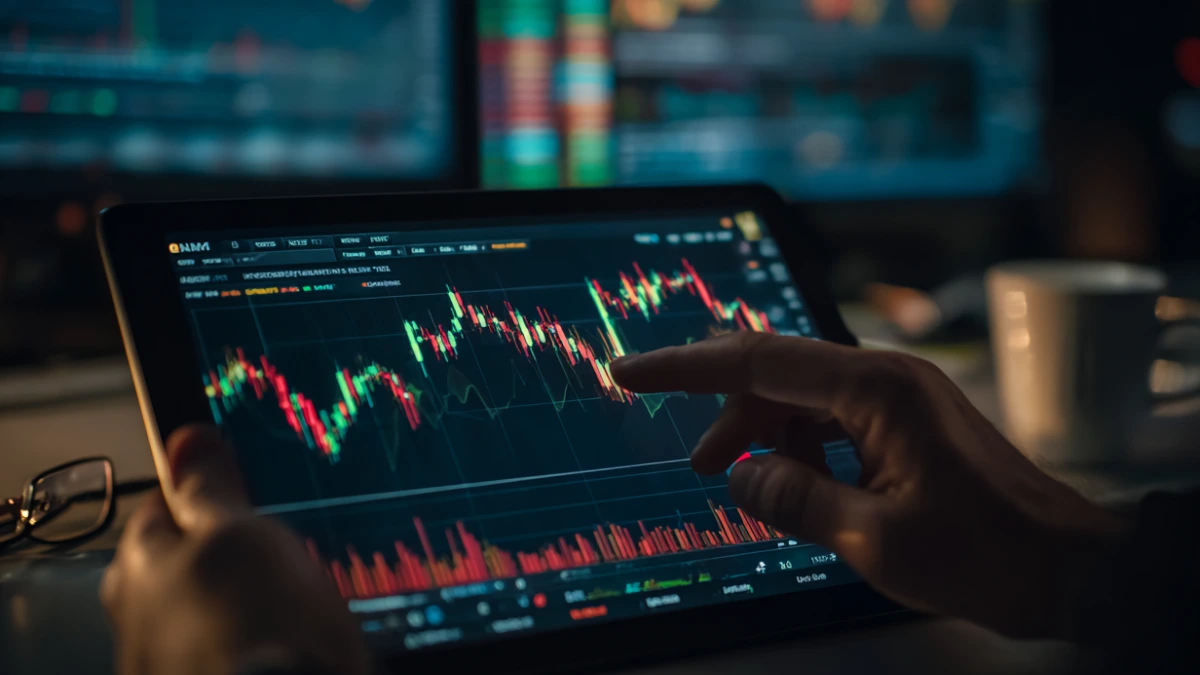Table of Contents
🔍 Introduction
Many new traders approach the markets like a game of chance — jumping into trades with fingers crossed, hoping things go their way, but without ever knowing if their method actually works. This is where strategy testing becomes essential.
Instead of gambling with your capital, testing your setup on historical price movement allows you to see how it would have performed — offering clarity instead of guesswork. At Mastery Trader Academy, we believe a trading plan is never truly complete until it’s been tested over dozens of scenarios. If you can’t tell how your method behaves over 50 to 100 trades, you’re relying more on luck than logic.
In this article, you’ll discover:
- What it really means to test a strategy using historical data
- Why many traders collect unreliable results when testing
- A step-by-step process to validate your system with confidence
- Key performance stats to monitor — without drowning in spreadsheets
- How to steer clear of common pitfalls like hindsight traps and overfitting
Whether you’re preparing for a prop firm evaluation, trying to trade efficiently alongside a job, or aiming to build a long-term strategy that holds up in all conditions — methodical testing is your shortcut to trading with conviction.
✅ What Is Backtesting?
Backtesting is the process of testing a trading strategy on historical market data to see how it would have performed in the past.
Think of it like a flight simulator for traders.
Instead of risking real money, you go back in time, apply your setup to past price action, and track the results — just like you would in live conditions. The goal? To find out if your strategy actually works before you put real money on the line.
🧠 Why Backtesting Matters
• It shows you how your strategy performs over dozens or hundreds of trades
• It helps you understand drawdowns, win rates, and risk
• It builds confidence so you’re not second-guessing in live markets
• It helps filter out strategies that only sound good in theory
📌 If you can’t trust your strategy during a backtest, you definitely won’t trust it during real trading.
🆚 Backtesting vs. Forward Testing
Type What It Is When to Use
Backtesting Testing your strategy on historical data (past charts) Before going live — helps validate your setup
Forward Testing Testing your strategy on real-time price action (demo or small size) After backtesting — helps you see how it performs live
Both are important. But backtesting always comes first.
🧠 Why Most People Backtest Wrong
Backtesting sounds simple — but most beginners get it completely wrong. Instead of testing their strategy honestly, they end up creating false confidence… and blow their account the moment they go live.
Here are the most common mistakes traders make while backtesting — and how to avoid them:
❌ 1. Hindsight Bias
You already know what happens next on the chart, so you subconsciously pick the perfect entries and exits.
🔎 Fix it: Use “bar replay” or scroll back far enough so you can’t see the future. Treat every candle like it’s unfolding live.
❌ 2. Cherry-Picking Trades
Only marking the wins and ignoring the losing setups is a trap. It makes your strategy look amazing — until real life happens.
🔎 Fix it: Include every valid setup, win or lose, according to your rules. Backtesting should reflect reality, not fantasy.
❌ 3. Changing the Rules Mid-Test
Tweaking your setup as you go ruins your data. You’re no longer testing a strategy — you’re building a fake one that looks good on paper.
🔎 Fix it: Define your rules before you start. Don’t touch them until the test is complete.
❌ 4. Not Recording the Results
Many traders backtest “in their head” and just move on. That’s not backtesting — that’s guessing.
🔎 Fix it: Use a simple spreadsheet or Notion template to track wins, losses, RR, drawdowns, and setups.
❌ 5. Only Testing One Market Condition
Your strategy might work in trending markets — but does it survive chop? News? Low volume days?
🔎 Fix it: Test your setup in different conditions: trending, ranging, volatile, and dead zones.
Backtesting is powerful — but only when it’s done with honesty, consistency, and clear rules. The goal isn’t to create perfect results. It’s to learn the truth about your edge.

🛠 Tools You Can Use to Backtest
You don’t need expensive software or complicated code to backtest effectively. Whether you’re trading Forex, Futures, Crypto, or Stocks — there’s a tool that fits your style.
Here are some of the best backtesting tools for beginners and prop firm traders:
🖥 1. TradingView (Replay Mode)
One of the easiest and most accessible platforms for backtesting.
• Use the bar replay feature to scroll back and simulate live trading
• Works great for Forex, crypto, indices, and some futures
• Add indicators, draw levels, and play the chart forward one candle at a time
✅ Perfect for visual learners who want to test price action, levels, or indicator setups.
📉 2. NinjaTrader (Futures Traders)
If you trade instruments like Gold (GC) or Oil (CL), NinjaTrader is powerful.
• Access to tick-based charts and range charts
• Historical order flow data available
• Manual and semi-automated backtesting options
✅ Great for Futures traders using volume, footprint, or order flow strategies
💱 3. Forex Tester (Paid Software for Forex)
Specifically designed for Forex traders who want to simulate realistic trading.
• Use real tick data to test strategies
• Simulates spreads, slippage, and realistic execution
• More detailed than TradingView, but comes with a cost
✅ Best for advanced backtesting in FX with precision control.
📝 4. Manual Backtesting (Spreadsheet + Screenshots)
No fancy tools? No problem.
• Scroll back on any chart
• Take screenshots of each setup
• Log results in Google Sheets, Excel, or Notion
✅ This old-school method still works — especially if you’re building discipline and learning patterns.
Bonus Tip: Use Backtest Tags or Emojis
On TradingView or in screenshots, tag each setup (✅, ❌, ⏳) to mark wins, losses, or invalids. It makes your visual review easier.
📊 What to Track While Backtesting
Backtesting isn’t just about marking wins and losses — it’s about collecting data that tells a story. That story will help you refine your strategy, avoid emotional traps, and understand how your edge performs over time.
Here’s exactly what you should be tracking during every backtest:
- ✅ Win Rate (% of Winning Trades)
How many of your trades actually win?
• Formula: (Winning trades ÷ Total trades) × 100
• Helps gauge the consistency of your setup
🔎 A strategy doesn’t need a high win rate to be profitable — it just needs good risk-to-reward.
- 💰 Risk-to-Reward Ratio (R:R)
How much do you make on your wins compared to what you risk?
• Example: If you risk $100 and make $300, that’s a 1:3 R:R
• Aim for setups that offer at least 1:2 or higher over time
🔑 Even a 40% win rate can be profitable with a strong R:R.
- 📉 Drawdown
How much did your account drop during a losing streak?
• Max drawdown tells you the worst-case scenario
• Helps you prepare mentally and size properly
⚠️ If your strategy has a 10% drawdown, are you emotionally ready to handle it?
- 📅 Average Trades Per Week
Are you overtrading or undertrading?
• Track how many valid setups you get weekly
• Helps match your strategy with your schedule and personality
🔁 Some strategies offer 3–5 setups/week. Others might offer 2–3 per month.
- 🌡 Market Conditions
Was the market trending, ranging, or volatile?
• Tag each trade with the environment it happened in
• You’ll spot patterns — like your setup failing more in chop or excelling in trends
📌 This helps you filter out low-quality conditions before you take a trade live.
- 🤯 Emotional Notes
Yes — even during backtesting.
• Were you confident in the setup?
• Did you hesitate, rush, or feel unsure?
• Did you skip or force any trades?
🧠 Tracking your emotions helps you identify internal sabotage before real money is at risk.
You don’t need a complicated system to track all this. A basic spreadsheet, Notion page, or even a journal will do the trick — as long as you’re consistent.
✍️ Step-by-Step: How to Backtest a Strategy From Scratch
If you’ve never backtested before, don’t worry — you don’t need fancy software or a PhD in data science. All you need is a clear setup, historical charts, and a repeatable process.
Here’s how to backtest your trading strategy from start to finish:
🪞 1. Choose Your Market and Timeframe
Pick the specific market and timeframe you want to test — don’t test everything at once.
• Example: Gold (GC) on the 5-minute chart
• Or: NAS100 on the 15-minute chart
✅ Stick to one market + one setup at a time to stay focused.
✍️ 2. Write Down Your Strategy Rules
Clarity is key. Define your exact entry, stop loss, and take profit rules.
Ask yourself:
• What conditions must be met before entering?
• What cancels the setup?
• How do you size the trade?
🛑 If your rules are vague, your results will be too.
🔙 3. Scroll Back to Clean Chart History
On TradingView or your platform, scroll far enough back so you can’t see the future. You want to simulate a real-time experience.
🧠 This removes hindsight bias — the #1 killer of honest backtesting
▶️ 4. Use Replay Mode or Manual Scrolling
Play the chart forward one candle at a time.
• Spot your setup
• Decide if you would take the trade (based on rules only)
• Mark your entry, stop, and take profit
• Let the trade play out
📌 No skipping candles. No cheating.
📋 5. Log Every Trade
Use a spreadsheet, Notion, or journal to track:
• Date
• Entry and exit price
• Win/loss
• R:R
• Market condition
• Emotional notes
💡 Over time, you’ll spot patterns and weaknesses you never saw before.
🔁 6. Repeat for at Least 50–100 Trades
One or two wins mean nothing. You need a sample size to understand the true performance.
• Aim for 100 trades minimum
• Include both good and bad setups
• Don’t skip losing streaks — they teach the most
🧠 You’re not just testing your edge — you’re building emotional muscle too.
Once done, analyze your results:
• Is the win rate consistent?
• Did you follow the rules every time?
• Does the setup hold up in different conditions?
🚨 Backtesting Red Flags to Avoid
Even if you follow the steps perfectly, there are a few dangerous traps that can ruin your backtest results — and give you a false sense of confidence heading into live trading.
Let’s break down the biggest backtesting red flags and how to avoid them:
⚠️ 1. Changing the Rules Mid-Test
It’s tempting to adjust your stop-loss, tweak your entry, or skip a “bad-looking” trade. But once you start doing that, you’re no longer testing a system — you’re curve-fitting.
🧠 Stick to your written rules for the entire test. Make improvements only after you complete the full round.
⚠️ 2. Curve Fitting
This means adjusting your strategy to perfectly fit historical data — but it usually falls apart in real markets.
• Example: “It would’ve worked better if I used a 7.3 EMA instead of 8…”
• Result: A strategy that looks perfect in the past but fails going forward.
📌 Backtesting is about consistency, not perfection.
⚠️ 3. Skipping Losses
Only logging the wins? That’s not backtesting — that’s fantasy trading.
✅ Include every valid setup — win, loss, or breakeven — based on your rules. The bad trades teach you more than the good ones.
⚠️ 4. Ignoring Market Conditions
Some setups only work in trending markets. If you only backtest during clean trends, you’ll get misleading results.
🔍 Make sure to test in different environments — trending, choppy, news-driven, and low-volume sessions.
⚠️ 5. Small Sample Size
Testing 10 or 15 trades is not enough. You can have a winning streak that makes your setup look great — but it doesn’t tell the full story.
🔁 Aim for at least 50–100 trades before drawing serious conclusions.
⚠️ 6. Not Accounting for Slippage or Spread
Backtest entries and exits that are too perfect? Real-life execution is rarely that clean.
💡 Be slightly conservative when placing theoretical entries and exits — account for spread, latency, and fills.
Backtesting is powerful — but only when it’s honest. These red flags don’t just distort your data… they sabotage your growth.
📘 How Much Backtesting Is Enough?
So you’ve started testing your strategy. But how many trades do you need to test before trusting it?
The answer depends on your goals — but here’s a simple rule:
🔑 The more data you collect, the more reliable your results become.
🧮 Minimum Sample Size: 50–100 Trades
For most strategies, 100 trades is the gold standard. It gives you:
• A strong sample size to calculate your true win rate
• A realistic view of drawdowns, slippage, and losses
• Enough trades to experience different market conditions
📌 If you’re short on time, 50 trades is the bare minimum to spot patterns — but don’t make major decisions based on less than that.
🌦 Test in Multiple Market Conditions
Markets don’t move the same way every day. To trust your setup, test it during:
• Trending conditions
• Sideways or choppy sessions
• High volatility (e.g., during news events)
• Low volume days
🎯 This helps you discover when your strategy thrives — and when it struggles.
📅 How Far Back Should You Test?
Try to backtest at least 3–6 months of price action, depending on your strategy frequency:
• If your setup shows up 3–5 times/week: test 3 months minimum
• If it’s a low-frequency setup: go back 6–12 months to collect 100 trades
⚖️ Quality > Quantity
Yes, sample size matters — but only if you’re testing honestly.
• Stick to one market at a time
• Follow fixed rules without emotion
• Track every trade, not just the wins
✅ Backtesting should simulate real trading behavior — not build a fantasy system.
🔁 What to Do After Backtesting
So you’ve completed your backtest. You’ve logged 100 trades, tracked your win rate, and faced the truth about your strategy. Now what?
Here’s exactly what to do next to turn those results into real-world consistency:
✅ 1. Summarize Your Strategy in One Page
Take all your notes and turn them into a simple trading plan.
Include:
• Entry rules
• Exit rules
• Risk management
• Best market conditions
• Common mistakes to avoid
📄 You should be able to glance at your plan and know exactly what to do — even on a stressful trading day.
🧪 2. Forward Test in Real Time (Demo or Small Size)
Next, move to forward testing. This means trading your strategy live — either on a demo account or with tiny risk — to see how it performs under live conditions.
• No rushing into full-size trades
• Stick to your plan
• Track results like you did during backtesting
🧠 This helps you build emotional discipline and execution confidence.
📘 3. Keep a Journal (And Keep Learning)
Backtesting isn’t a one-time event. You’ll refine your system as you grow.
• Continue journaling wins, losses, and emotions
• Note when your setup works best (and worst)
• Revisit your backtest every month or two to adjust and improve
🔁 A trader’s edge evolves. So should your system.
🧠 4. Trust the Data — Not the Emotions
You backtested for a reason. So when fear, greed, or doubt show up during live trading…
📌 Go back to your numbers. Let the data guide your decisions.
🎯 Final Thoughts
Backtesting isn’t about perfection — it’s about proof. It gives you clarity, structure, and confidence before money is on the line.
Whether you’re trading personal capital or trying to pass a prop firm challenge, backtesting is your foundation. It turns your trading plan from theory into something you can trust when the pressure’s on.
So take the time. Track the trades. Learn from the data. And build a system that can survive and thrive in the real market.
Before you risk real money in the market, one of the smartest things you can do is backtest your trading strategy with discipline and clarity. Backtesting allows you to simulate your setups over hundreds of past trades, so you can analyze how your system performs in different market conditions, from trends to volatility spikes. Many professional traders and educators, such as those featured by Investopedia, emphasize that without structured backtesting, a trading plan is incomplete — it’s theory, not proof.
By using tools like TradingView’s replay mode or even simple screenshot tracking in Notion or Excel, you can log your win rate, average risk-to-reward, drawdowns, and emotional reactions. This data becomes your trading compass. At Mastery Trader Academy, we strongly recommend reviewing our breakdown of the Liquidity Inducement Trading Strategy: How Smart Money Lures Retail Traders Into the Trap, as it helps you identify false moves and structure your backtest around high-probability zones. The goal isn’t to be perfect — it’s to be consistent, informed, and ready to perform with confidence when it counts most. Backtesting gives you that edge, and it separates amateurs from professionals in the long run.

